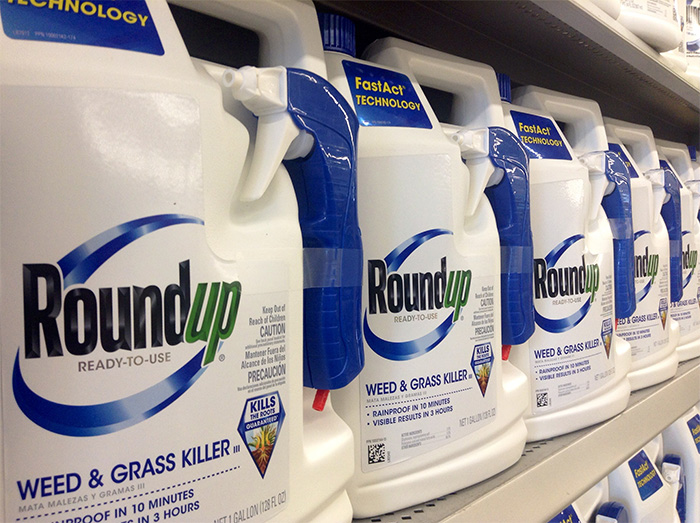New research links childhood exposure to glyphosate, the primary ingredient in the popular herbicide Roundup, to increased risk of liver inflammation and metabolic disorders.
Glyphosate is a broad-spectrum herbicide, brought to market by Monsanto in 1974 and widely used. It is the primary ingredient in the popular week killer Roundup. Numerous studies have linked exposure to glyphosate to liver disease in animal models.
In 2019, Paul J. Mills, PhD, professor at The Herbert Wertheim School of Public Health and Human Longevity Science, reported the first documented association between glyphosate and negative effects upon the human liver.
In new research, published March 1, 2023 in Environmental Health Perspectives, Mills with collaborators at UC Berkeley School of Public Health’s Center for Environmental Research and Community Health build upon that evidence, finding that childhood exposure to glyphosate is linked to liver inflammation and metabolic disorder in early adulthood, which could lead to liver cancer, diabetes, and cardiovascular disease later in life.
The study involved 480 mother-child duos from the Salina Valley, a rich agricultural region.
The authors reported that higher levels of glyphosate residue and AMPA (a degradation product of glyphosate) in urine in childhood and adolescence were associated with higher risk of liver inflammation and metabolic disorders in young adulthood.
The investigators also found that agricultural glyphosate use near participants’ homes from birth and up through age five was associated with metabolic disorders at age 18. They reported that diet was likely a major source of glyphosate and AMPA exposure among study participants, as indicated by higher urinary glyphosate or AMPA concentrations among those adolescents who ate more cereal, fruits, vegetables, bread, and in general, carbohydrates.
(Glyphosate cannot be entirely removed by washing or cooking foods that have been exposed to the herbicide, though thorough washing may reduce how much is ingested. Generally speaking, the herbicide is broken down by bacterial action, which may take days to months.)
— Scott LaFee
